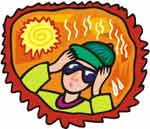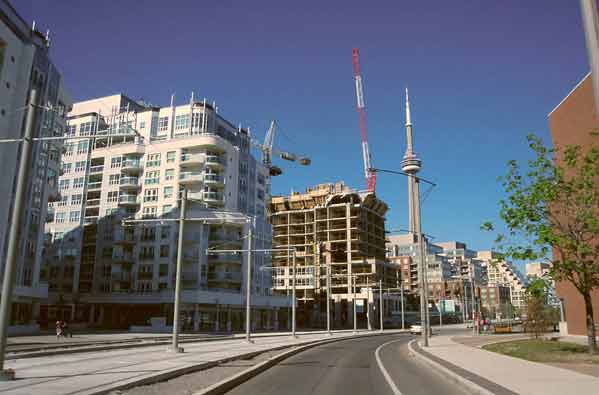
> English > Climate Encyclopaedia > Climate in Cities > more > 2. Urban Climate > * Worksheet 2
|
|
 |
Urban Climate
Read more |
2. Urban climate - more
Heat Balance
Worksheet 2:
Test your knowledge |
 |
 |
|
1. Clipart by Hemera,
Big box of art
|
|
 |
Heat Balance |
|
When the sun shines in the summer, streets and asphalt heat up. This heat remains in the ground for some time and is then lost to the air.
You can test this yourself in the evening after a sunny summers day.
Walk barefoot on a pavement or concrete surface at sunset. The surface is still warm even though the Sun has set.
Now step on the grass. The surface feels very much cooler.
|
 |
 |
|
2. Asphalt and concrete covered surfaces and the walls of buildings store heat from the Sun. This heat is released slowly and so urban environments cool down slowly at night. Picture: Hemera "Big box of art".
|
|
|
|
Can you answer the following questions on heat balance? |
|
| 1) What is the overheating of a city called? |
|
|
| 2) What is the best way to prevent cities overheating? |
|
|
| 3) Which type of weather favours the formation of extremely warm urban climates? |
|
|
| 4) What happens to the short wave radiation when it hits the surface of the Earth? |
|
|
| 5) What is the name for the energy which is released when water changes its state (e.g. when it evaporates)? |
|
|
| 6) Which material has the lowest capacity to store heat? |
|
|
| |
|
|
|
Attention: This quiz is optimised for internet explorer or new versions of Netscape!
If the little solution window disappears, just reopen it from the task row! |
|
|
|
|
|
|
| |
About this page:
author: - B. Wohlhöfer - University of Nürnberg, Germany
educational reviewing: Dr. Helmut Schrettenbrunner, Dr. Yvonne Schleicher and Julia Heres - University of Nürnberg, Germany
last update: 2003-09-09
|
 > English > Climate Encyclopaedia > Climate in Cities > more > 2. Urban Climate > * Worksheet 2
> English > Climate Encyclopaedia > Climate in Cities > more > 2. Urban Climate > * Worksheet 2

